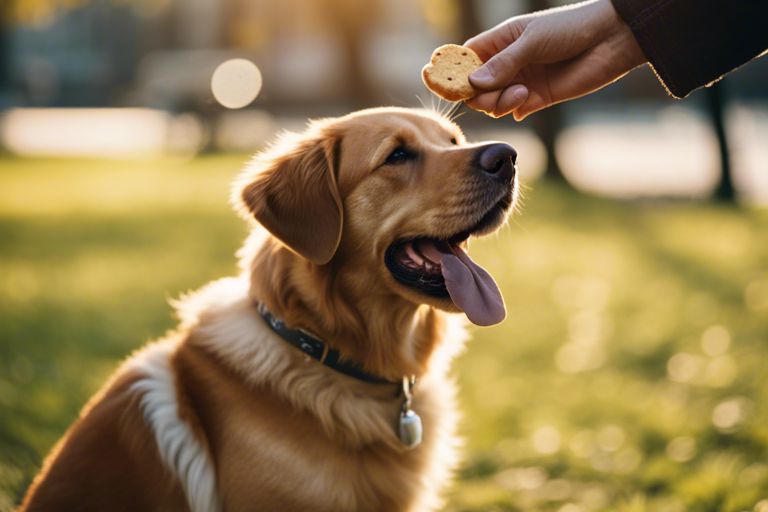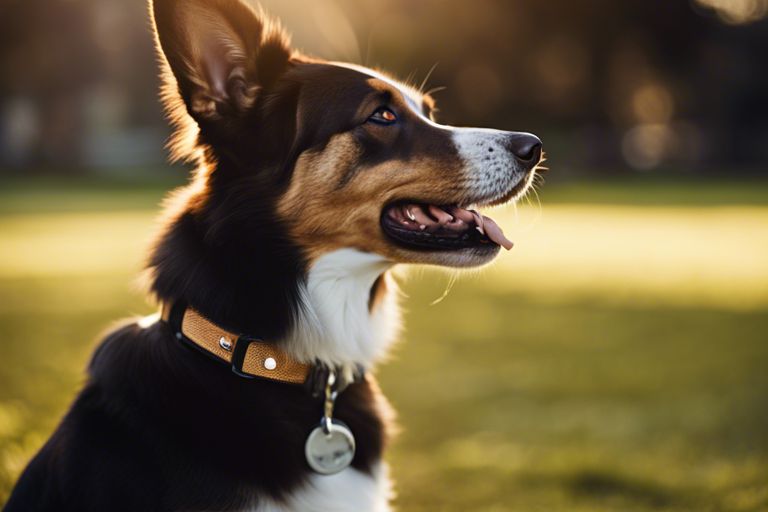There’s no denying that having a well-trained dog makes life easier and more enjoyable for both you and your furry friend. One of the fundamental commands every dog should learn is how to sit and stay on command. In this guide, we will walk you through step-by-step instructions on how to effectively train your dog to sit and stay, building a strong foundation of obedience and trust between you and your canine companion.
Key Takeaways:
- Consistency is key: Training your dog to sit and stay requires consistency in your commands and actions. Reinforce the desired behavior each time and be patient with your pet.
- Use positive reinforcement: Reward your dog with treats, praise, or playtime when they successfully follow the sit and stay commands. Positive reinforcement will motivate them to continue obeying.
- Practice makes perfect: Regular practice sessions with your dog will help them master the commands of sitting and staying. Start training in a quiet, distraction-free environment and gradually increase difficulty as your dog learns.
Understanding the Basics of Dog Training
While training your dog, it is important to understand the basics of dog training. This includes recognizing the factors that can affect your dog’s behavior and the importance of consistency and patience in the training process.
Factors Affecting Dog Behavior
- Genetics
- Environment
- Socialization
After identifying these factors, you can tailor your training approach to suit your dog’s unique needs and tendencies.
Importance of Consistency and Patience
To effectively train your dog, consistency and patience are key. Consistency involves using the same commands and cues repetitively and rewarding positive behavior consistently. This helps your dog understand what is expected of them and reinforces desired behaviors.
You should also practice patience during the training process. Dogs may not learn commands immediately, and it can take time for them to grasp what is being asked of them. Being patient and understanding will help build a strong bond between you and your dog and lead to more successful training outcomes.
Behavior
Preparing for Training
Choosing the Right Training Environment
Some dogs may have difficulty focusing in environments with distractions such as loud noises or other animals. It’s important to choose a quiet and familiar space for training sessions to maximize your dog’s chances of success. This could be a room in your home or a secluded spot in the backyard where your dog feels comfortable and at ease.
Gathering Essential Training Tools
Even before starting the training sessions, it’s necessary to gather the necessary tools to make the process smooth and effective. These tools may include treats, a clicker, a leash, and a training collar. Having these items readily available will help you stay organized and prepared during training sessions.
Any successful training session requires the use of positive reinforcement, rewards, and consistency. Treats can be a powerful motivator for your dog and can help reinforce good behavior. A clicker can be used as a marker to signal to your dog when they have done the desired behavior, making it easier for them to understand and learn.
Setting Realistic Training Goals
For instance, if your dog is still learning the basics like sit and stay, it may not be realistic to expect them to perform these commands in a distracting environment right away. Start with simple goals and gradually increase the difficulty as your dog progresses. Setting achievable goals will not only keep you motivated but also prevent your dog from becoming frustrated during training sessions.
Realistic training goals should be specific, measurable, and attainable. This could include practicing the sit command for 10 minutes every day until your dog can reliably perform it on cue. By breaking down the training process into smaller goals, you can track your progress and celebrate each milestone achieved with your furry friend.
Teaching Your Dog to Sit
How-to Guide to Teaching Your Dog to Sit
On your journey to mastering obedience with your dog, teaching them to sit is a fundamental command. This basic cue not only helps with obedience but also lays the foundation for teaching your furry friend more advanced commands.
Tips for Overcoming Common Challenges
Any dog owner may encounter challenges when training their pet to sit. One common issue is your dog getting distracted or not understanding what you want them to do. Patience and consistency are key in overcoming these hurdles.
- Use high-value treats to motivate your dog.
- Break the training sessions into short, frequent intervals to keep your dog engaged.
- Practice in a quiet environment to minimize distractions.
Perceiving your dog’s individual learning style and adjusting your training methods accordingly can also help in overcoming challenges.
Factors to Consider for Successful Sitting
Successful training sessions rely on various factors that can influence your dog’s ability to learn and follow commands. Considering these factors can make the training process more effective and enjoyable for both you and your pet.
- Knowing your dog’s temperament and energy levels.
Knowing the factors that can affect your dog’s behavior and learning process will help you tailor your training approach to suit their needs.
- Considering the environment in which you are training your dog.
By considering the setting and surroundings where you train your dog to sit, you can create a conducive learning environment that promotes focus and understanding.

Mastering the Stay Command
After successfully teaching your dog to sit on command, the next imperative skill to master is the ‘stay’ command. Teaching your dog to stay in one place until released is crucial for safety and control in various situations.
How-to Guide to Teaching Your Dog to Stay
Assuming your dog is comfortable with the ‘sit’ command, start by giving the verbal cue ‘stay’ while using a hand signal, such as a flat palm facing your dog. Begin by asking your dog to sit, then take a small step back while maintaining eye contact. If your dog stays in place, immediately reward with a treat and verbal praise. Gradually increase the distance and time your dog must stay before receiving the reward.
Tips for Gradually Increasing Distance and Time
- Practice in a quiet, distraction-free environment to help your dog focus.
- Use a release word like “okay” to let your dog know they can move.
Gradually increase the distance and time your dog must stay before giving the reward to build up their patience and obedience. This method helps reinforce the stay command and teaches your dog self-control.
Factors to Consider for Successful Staying
The success of teaching your dog to stay depends on various factors, including the dog’s age, breed, personality, and past experiences. It’s imperative to factor in these elements when training to tailor your approach to your dog’s specific needs.
- Perceiving your dog’s body language and level of comfort is key to successful training.
Factors such as consistency, positive reinforcement, and patience play a crucial role in teaching your dog the stay command effectively. By considering these elements, you can create a positive learning experience for your dog and strengthen your bond through training sessions.
Common Mistakes to Avoid
Overcorrecting and Undercorrecting
If you overcorrect your dog during training, you may end up frightening or confusing them. This can cause them to become hesitant or fearful of performing the desired behavior. On the other hand, undercorrecting involves not providing enough guidance or discipline, leading to a lack of understanding on your dog’s part. Finding the right balance is key to effective training.
Inconsistent Rewards and Punishments
Some common mistakes in dog training involve inconsistency in rewards and punishments. If you randomly reward or punish your dog without a clear pattern, they may not understand what is expected of them. Consistency helps your dog learn the desired behavior faster and more effectively.
Rewards should be given immediately after the correct behavior is performed, so your dog associates the reward with the action. Punishments should be appropriate and relevant to the unwanted behavior, ensuring that your dog understands the consequences of their actions.
Lack of Clear Communication
Little cues, such as tone of voice and body language, are important forms of communication with your dog during training. If you are inconsistent in how you deliver these cues, your dog may become confused or unsure of what you want. Clear and consistent communication helps your dog understand your expectations and respond accordingly.
The key to successful training lies in the clarity of your communication. Establishing clear signals and commands early on will prevent misunderstandings and make the training process smoother for both you and your dog.
Advanced Training Techniques
All dog owners aspire to teach their pets advanced commands beyond the basic sit and stay. Here are some techniques to level up your dog’s training:
- How-to Guide to Training in Distractions
How-to Guide to Training in Distractions
Little by little, introduce distractions during training sessions to help your dog stay focused in real-world situations. Start by adding mild distractions, such as noise or toys, and gradually increase the level of difficulty. Ensure your dog can obey commands even with these distractions present.
- Tips for Generalizing Training to New Environments
Tips for Generalizing Training to New Environments
While taking your dog to different locations for training, be patient and consistent in your commands. Practice obedience in various environments to help your dog generalize the commands and follow them regardless of the setting.
- Regularly change training locations to promote adaptability and obedience in diverse surroundings. Thou might encounter challenges, but consistency is key in reinforcing learned behaviors.
Now, let’s explore the factors that play a crucial role in advanced training:
- Factors to Consider for Advanced Training
Factors to Consider for Advanced Training
Advanced training requires more than just basic obedience. Factors such as a dog’s temperament, age, and health should be taken into account to ensure successful training sessions. Tailor your training approach to suit your dog’s individual needs and capabilities.
- Advanced Training Tips
Advanced training techniques may include agility training, advanced obedience commands, or even tricks. It is vital to keep training sessions engaging and rewarding for your dog to maintain their interest and motivation.
Final Words
Summing up, mastering obedience training is crucial for a well-behaved dog. By following the steps outlined in this guide on how to train your dog to sit and stay, you can establish a strong foundation of discipline and respect with your furry friend. Consistency, patience, and positive reinforcement are key components to successfully teaching your dog these imperative commands.
Be mindful of, every dog is different, so it’s important to tailor your training methods to suit your dog’s unique personality and temperament. With time, dedication, and a lot of love, you can successfully train your dog to sit and stay, setting the stage for a happy and harmonious relationship between you and your canine companion.
FAQ
Q: What is the first step in training my dog to sit and stay?
A: The first step in training your dog to sit and stay is to establish a clear communication and understanding between you and your dog. Use positive reinforcement techniques such as treats and praise to encourage your dog to sit on command.
Q: How can I teach my dog to stay after sitting?
A: Once your dog has mastered the sit command, you can begin teaching them to stay. Start by giving the sit command, then hold your hand up in a stop gesture and say “stay” in a firm but calm voice. Reward your dog for staying in place, gradually increasing the duration of the stay over time.
Q: What are some common mistakes to avoid when training my dog to sit and stay?
A: Some common mistakes to avoid when training your dog to sit and stay include inconsistency, impatience, and using punishment-based methods. Be consistent in your training, be patient with your dog’s progress, and always use positive reinforcement to encourage good behavior.

